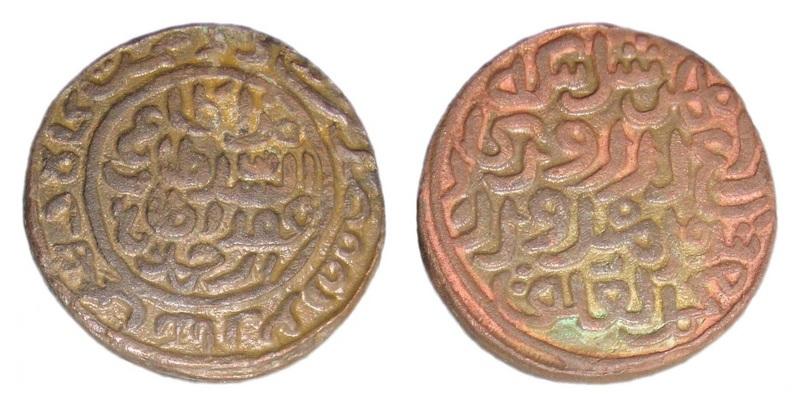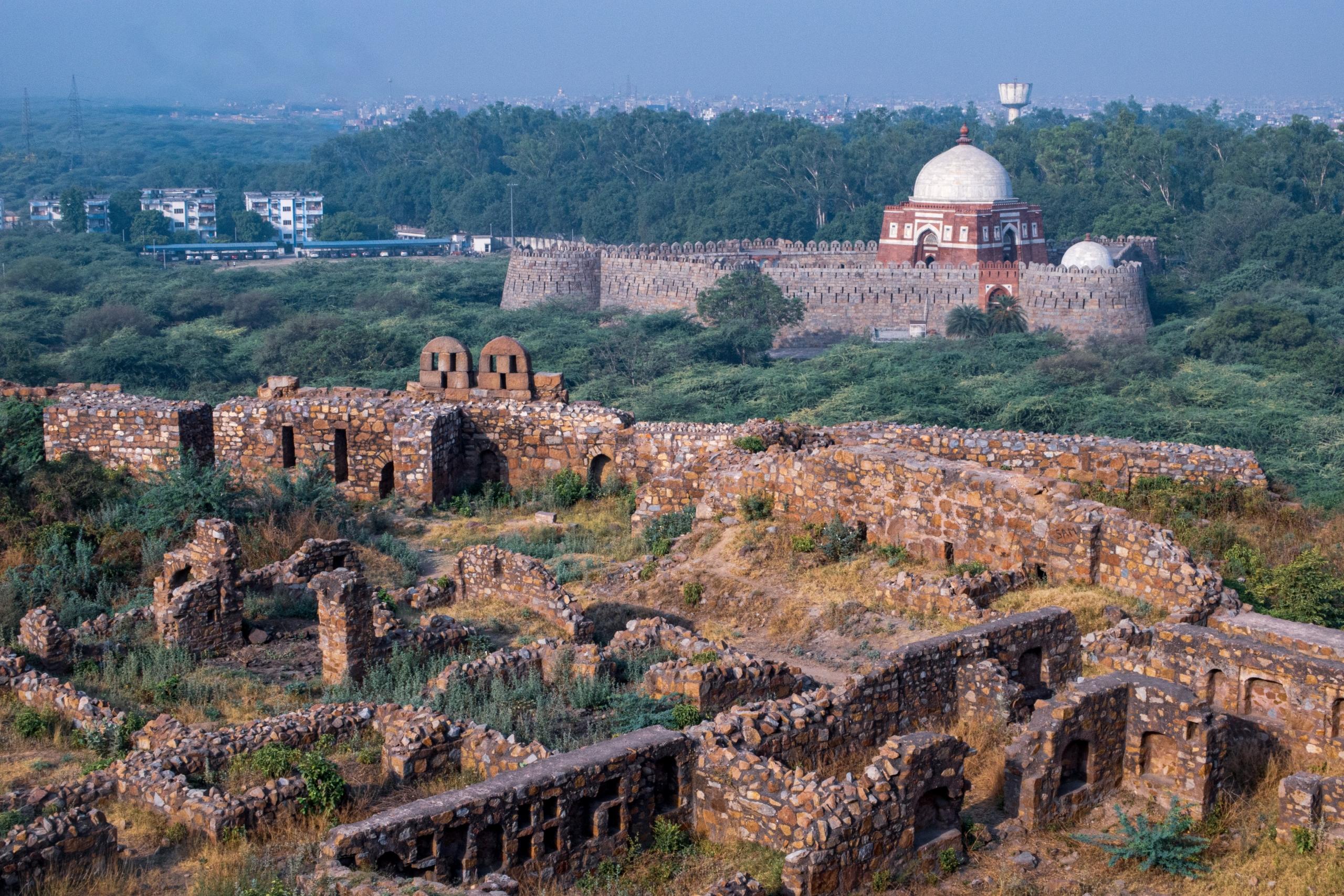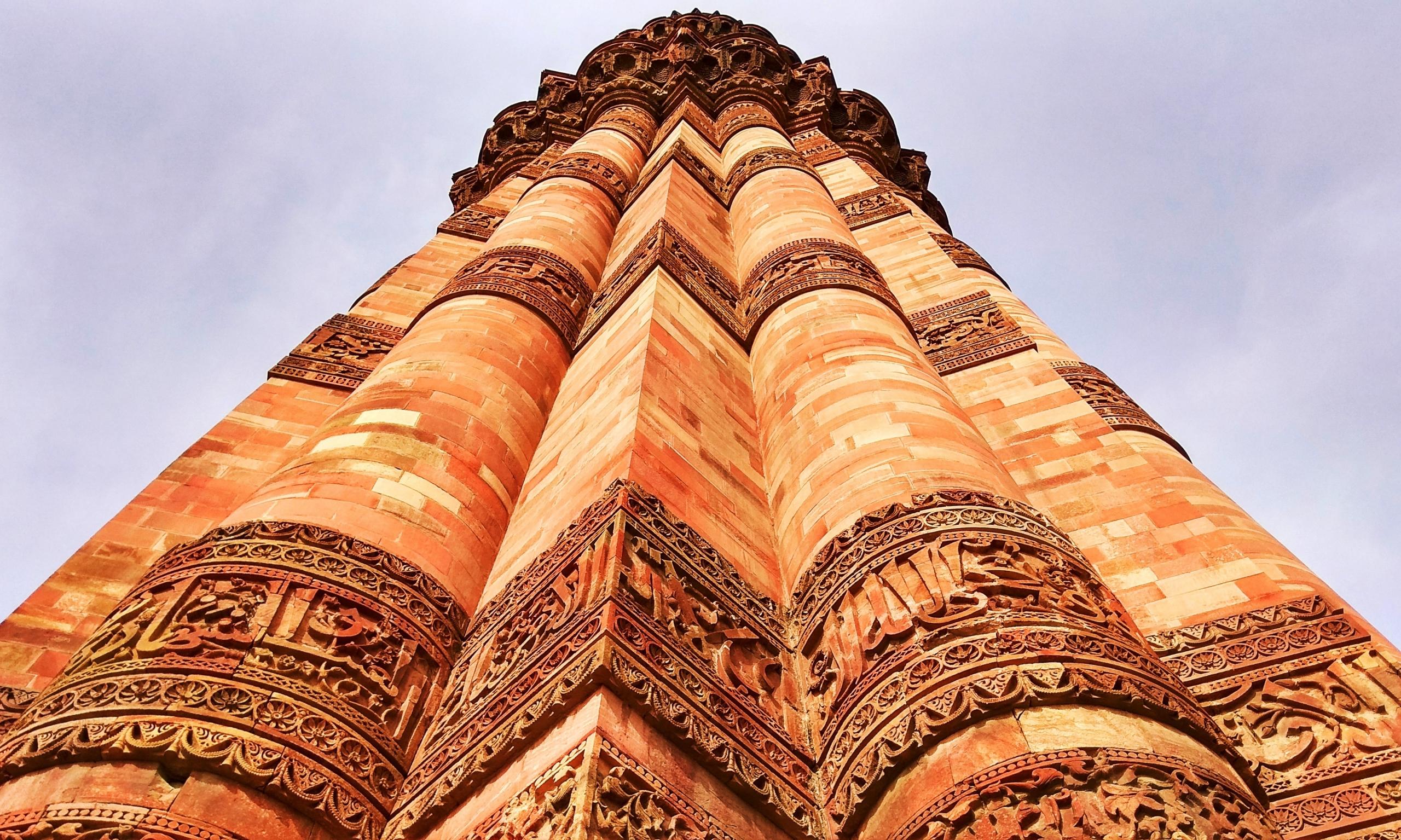The five dynasties that came after Prithviraj Chauhan's demise and before the Mughals incorporated the city into their thriving empire are collectively referred to as the Sultanate. This marked the beginning of Indo-Islamic architecture and many other types of art, which eventually led to an evolved union of two religions and civilizations as a whole. The art was mostly of Afghan or Turkish provenance.
The Slave dynasty (1206-90), the Khilji dynasty (1290-1320), the Tughlaq dynasty (1320-1413), the Sayyid dynasty (1414-51), and the Lodi dynasty (1451-1526) were among the Turkic and Pashtun dynasties that reigned from Delhi. The Moghul Empire essentially took over the Sultanate in 1526, despite a brief resurgence under the Suri Sultans.
Discover how the Marathas, under the courageous leadership of Shivaji, stemmed the tide of the Mughal onslaught in medieval India.

Brief History of the Sultanate of Delhi
The primary accomplishment of the Delhi Sultanate, which spanned the medieval period in India, was its ability to repel the Mongol invasion of India, even though the Moghuls were descended from Genghis Khan. Though there were occasions when Hindu holy places were vandalized and Hindus faced persecution, overall ties between Hindus and Muslims were positive during the Moghul era in India. However, Indian Islam assimilated deeply into the country and its culture, fostering a pluralist civilization that would eventually peak under the Mughal Dynasty, which ruled from 1526 to 1857. Even now, the Indian subcontinent is still influenced by its past.

The Mamluks
In 1206, Qutub-ud-Dïn Aybak established the Mamluk Dynasty. He was a Turk from Central Asia who had served as a general in the disintegrating Ghurid Sultanate, a Persian dynasty that had governed over modern-day Afghanistan, Pakistan, Iran, and northern India.
Like many of his predecessors, Qutub-ud-Dïn's rule was short-lived, since he passed away in 1210. His son-in-law Iltutmish took over the Mamluk Dynasty's authority and, before he died in 1236, really established the sultanate at Dehli.
During that period, four Iltutmish descendants were installed on the throne and executed, throwing Dehli's government into disarray. Interestingly, one of the many instances of women in authority in early Muslim culture is the four-year reign of Razia Sultana, whom Iltutmish had chosen on his deathbed.
The Khiljis
The Khilji Dynasty, the second of the Delhi Sultanates, was called after Jalal-ud-Dïn Khilji, who slew Moiz ud din Qaiqabad, the final Mamluk Dynasty monarch, in 1290. Similar to several individuals both before and after him, the reign of Jalal-ud-din Khilji was brief. His nephew, Ala-ud-din Khilji, assassinated him six years later to seize control of the family.
In addition to being a despot, Ala-ud-din was credited with keeping the Mongols out of India. Due to his expertise as a power-hungry general, Ala-ud-din expanded quickly across most of Central and Southern India during his 19-year rule. He also raised taxes to fortify his army and treasury.
Following his demise in 1316, the dynasty began to disintegrate. The Khilji Dynasty came to an end when Ala-ud-din's 18-year-old son assumed the throne and ruled for just four years before being assassinated by Khusro Khan. Malik Kafur, the eunuch general of his armies and a Muslim who was born in Hindustan, attempted to seize power but lacked the necessary support from the Persian or Turkic people.
Retrace the history of the first major dynasty of north India, the Mauryas.
The Tughlaqs
Khusro Khan did not live long enough to start his dynasty; four months into his reign, Ghazi Malik assassinated him and took the name Ghiyas-ud-din Tughlaq, founding a dynasty that lasted for almost a century.
Under the 26-year rule of Muhammad bin Tughlaq, the heir to Ghiyas-ud-din, the Tughlaq Dynasty was able to extend its dominance over much of modern-day India from 1320 to 1414. He made the dynasty's reach the greatest of all the Delhi Sultanates by extending its boundaries to the southeast coast of contemporary India.
But in 1398, Timur (Tamerlane), acting on behalf of the Tughlaq Dynasty, invaded India, pillaging and destroying Delhi and slaughtering its populace. The Sayyid Dynasty began when a family claiming ancestry from the Prophet Muhammad conquered Northern India during the upheaval that followed the Timurid invasion.
The Sayyid and Lodi Dynasties
The succession to Dehli was fiercely contested for the next sixteen years, but in 1414 the Sayyid Dynasty emerged victorious in the capital, and Sayyid Khizr Khan, claiming to be the Timur, emerged victorious. But the Timur people were notorious for plundering and forgetting their victories, thus his reign and the reigns of his three heirs were hotly contested.
The Sayyid Dynasty was doomed to fail from the start, as the fourth sultan abdicated in 1451 to make way for Bahlul Khan Lodi, the founder of the ethnic Pashtun Lodi Dynasty that emerged from Afghanistan. Renowned for his horse-trading and warlordship, Lodi helped to restore northern India following the devastation caused by Timur's invasion. His reign was unquestionably superior to the Sayyids' incompetent governance.
Following Babur's victory over the much larger Lodi army in the First Battle of Panipat in 1526, which resulted in Ibrahim Lodi's death, the Lodi Dynasty came to an end. Babur, a Muslim king from Central Asia, established the Mughal Empire, which ruled India until it was overthrown by the British Raj in 1857.
Before the Delhi Sultanate period, the Gupta Empire took the lead in promoting India's art and architecture.
The Suri Revival
The Moghuls controlled Delhi from 1526 to 1540, when Babur defeated Ibrahim Lodi. Following Sher Shah's victory over the Moghuls at the Battle of Chausa in 1540, the Delhi Sultanate was once more autonomous until the Moghuls retook Delhi in 1555.

Delhi Sultanate Notes
For your Delhi Sultanate UPSC preparation, keep these important rulers and landmarks in mind.
Rulers of the Mamluk Dynasty (1206 - 1290)
- Qutb-ud-din Aybak (1206 - 1210)
- Aram Shah (1210 - 1211)
- Altamas(Shams ud din Iltutmish) (1211 - 1236)
- Rukn ud din Firuz (1236)
- Razia Sultan (Raziyyat ud din Sultana) (1236 - 1240)
- Muiz ud din Bahram (1240 - 1242)
- Ala ud din Masud (1242 - 1246)
- Nasir ud din Mahmud (1246 - 1266)
- Ghiyas ud din Balban (1266 - 1286)
- Muiz ud din Qaiqabad (1286 - 1290)
Rulers of the Khilji (Khalji) Dynasty (1290 - 1321)
- Jalal ud din Firuz Khilji (1290 - 1294)
- Ala ud din Khilji (1294 - 1316)
- Qutb ud din Mubarak Shah (1316 - 1321)
Rulers of the Tughlaq Dynasty (1321 - 1398)
- Ghiyas ud din Tughluq Shah I (1321 - 1325)
- Muhammad bin Tughluq (Muhammad Shah II) (1325 - 1351)
- Mahmud Ibn Muhammad (March 1351)
- Firuz Shah Tughluq (1351 - 1388)
- Ghiyas ud din Tughluq II (1388 - 1389)
- Abu Baker (1389 - 1390)
- Nasir ud din Muhammad Shah III (1390 - 1393)
- Sikander Shah I (March - April 1393)
- Mahmud Nasir ud din (Sultan Mahmud II) at Delhi (1393 - 1394)
- Nusrat Shah at Firuzabad (1394 - 1398)
Sayyid (Syed) Dynasty (1414 - 1451)
- Khidr Khan (1414 - 1421)
- Mubarrak Shah II (1421 - 1435)
- Muhammad Shah IV (1435 - 1445)
- Aladdin Alam Shah (1445 - 1451)
Lodhi (Lodi) Dynasty (1451 - 1526)
- Bahlul Khan Lodi (1451-1489)
- Sikandar Lodi (1489-1517)
- Ibrahim Lodi (Ibrahim II) (1517-1526)
Suri Dynasty (1540 - 1555)
- Sher Shah (1540 - 1545)
- Islam Shah (1545 - 1553)
- Muhammad V of Delhi (Muhammad V) (1553 - 1554)
- Firuz of Delhi (29 April - 2 May 1554)
- Ibrahim III of Delhi (1554 - 1554/5)
- Sikander Shah (1554/5 - 1555)
Administration of the Delhi Sultanate: Overview
The Delhi Sultanate's government adhered to Sharia and Quranic law, which are Islamic legal systems. In concerns of the state, the Sultan and the nobility had an obligation to respect Islamic law. The administration had several departments, each with distinct duties, and was well-organized:
- Sultan: As head of state, the Sultan possessed total authority.
- Naib: A post corresponding to that of Sultan.
- Wazir: The prime minister, who oversaw the budget and provided guidance to the state.
- Diwan-I-Ariz: Under the Sultan's direction, this division oversaw the armed forces.
- Diwan-I-Risalat: This was the title for the foreign minister in charge of ties with neighbouring kingdoms and strong leaders.
- Diwan-I-Insha: in charge of numerous offices and local correspondence.
- Sadr-Ur-Sadar: Protected Islamic law and oversaw the religion department.
- Amir-I-Mazls-Shahi: Headed by the minister in charge of setting up festivals and public amenities.

Famous Delhi Sultanate Monuments
- Qutab Minar: A famous minaret featuring elaborate carvings
- Tughlaqabad Fort: Towering walls and ruined fortification
- Lodhi Garden: A mixture of Indian and Islamic architecture
- Hauz Khas Complex: Houses the carved Hauz Khas Mosque
Delhi Sultanate: Legacy
Although they had friendly, albeit surface-level, relationships with other Muslim kings in the Near East, the Delhi Sultans owed them nothing. The Qur'an and sharia served as the foundation for the Sultans' legal system, which only allowed non-Muslim subjects to practice their faith in exchange for paying jizya, or head tax. The military camps and commerce posts served as the hubs for the cities that sprouted up in the countryside, while the Sultans ruled from urban centers. The Sultanate's brief accomplishment in sparing the subcontinent from the possible destruction of the Mongol invasion from Central Asia in the thirteenth century was arguably its greatest contribution.
A time of resurgence in Indian culture was ushered in by the Sultanate. The "Indo-Muslim" union that resulted left enduring markers in literature, music, architecture, and religion. After Timur (Tamerlane) took over Delhi in 1398, the Sultanate faltered, and shortly after, separate Sultanates were founded in Awadh, Bengal, Jaunpur, Gujarat, and Malwa. The Moghul Empire continued to enlarge its domain, with the Sultanate serving as its foundation.















